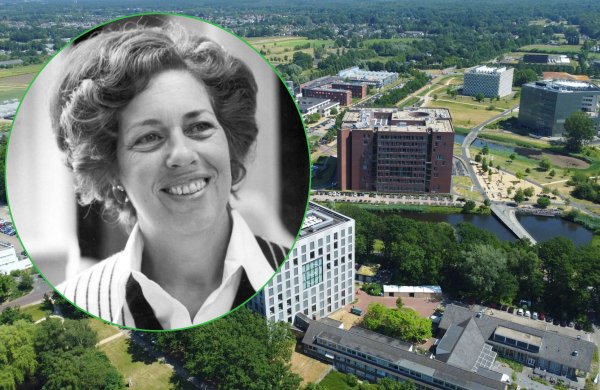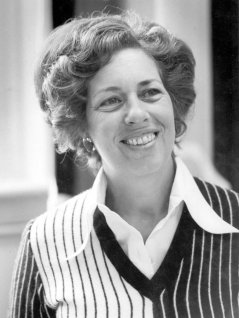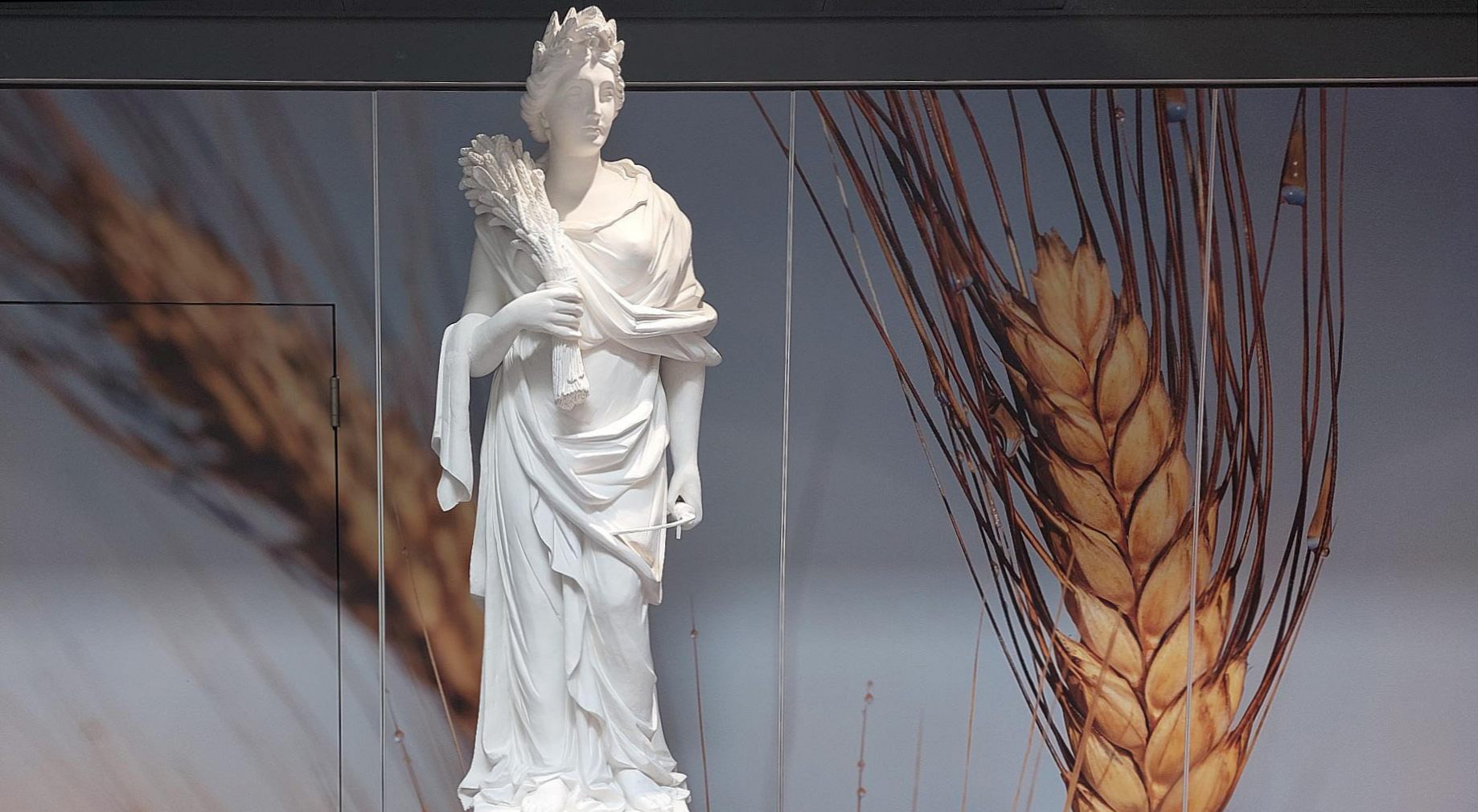
Longread
Bernardijn ten Zeldam-Hartelust: First woman’s address at the opening of the Wageningen academic year (1979) – First woman president of WUR council (1973)
Bernardijn ten Zeldam-Hartelust was 45 years ago the first woman who held the opening address for the new academic year, on 3 September 1979. It was also her farewell address after having served Wageningen for 12 years. From 1973 onwards she had been the first woman and feminist president of the WU council. The way she addressed the new field of ‘women and science’, the low numbers of women students and scientists, and required action for career development, affirmative discrimination, and empowerment, is still very inspirational. She is therefore part of our series of ‘Inspiring women of WUR in the past’.
In her speech ‘Ten percent’ (in Dutch only) Bernardijn ten Zeldam-Hartelust (1928-1982) reflected on her 6 years of chairing the WU council, by then 10 percent of Wageningen’s history for higher education. The council was then called the Hogeschoolraad of the Landbouwhogeschool (Agricultural College). After a brief review of the widely discussed policies and changes at the universities, for instance on how to improve the relation with society, she looked forward in her speech.
As alumna of Wageningen with worldwide experience, Bernardijn proudly mentioned the success of including a new field ‘Women and Science’ in the new institutional plans for 1980-1983. She was pleased to be able to refer to the inaugural speech ‘Feminism and Science’ (in Dutch only) of Prof. dr. Geertje Thomas-Lycklama à Nijeholt in June 1979. The new professor had been hired for an extraordinary professorship, labelled as ‘Social movements, in particular women’s emancipation, in both western and non-western contexts.’. This professorship was financed by the Wageningen Fund, now UFW, for 1 day a week for 5 years. Bernardijn also highlighted the activities of the newly established women’s committee of women scientists and students, coordinated by Annemarie van de Vusse of Studium Generale. At last, she announced the upcoming appointments of two women’s studies teachers (half a week each), one for the social and one for the natural sciences. These were secured with the support of the College Board.
Call for further action

In her speech Bernardijn took the occasion to call for further action. She pointed at the low percentage of women among the students. This was 25% in Wageningen while NL had 27%. Though, the technical colleges only had 6% women students. Wageningen performed comparatively better in keeping the students, since nationally 40% of the women students dropped out; in Wageningen ‘only’ 23.5%. Bernardijn therefore made a strong plea for extra guidance for women students to prepare them well for a professional life, eventually combined with family responsibilities. She also stressed the importance to advancing their career development together with their social resilience and self-confidence.
Though, according to her, such measures would only work if women students were enabled to identify themselves with women scientists who would be fully respected in their career ambitions. There, she found Wageningen performing miserably: ca 6 % of all Landbouwhogeschool scientists were women against 11 % on the national level. She noticed that her support to the call for affirmative action by the VVAO (Dutch Association of Academic Women) in 1975 had not been successful. She explained that such action might have been pursued too early but estimated that taking more initiative on the student level was at least timely. There, she was happy to have College Board president Peter van der Schans in her corner since he had expressed various positive options.
Embeddedness in national actions
Bernardijn highlighted two new publications to her support. The first was an article of Derek L. Philips, professor of Sociology at VU (Gids 1979, in Dutch only) in which he elaborated on examples of affirmative action. These were actively reaching out to women when there are vacancies, offering advice in career development, assessing labour contracts on possible discriminatory clauses, and bringing women under the attention of recruitment & selection committees. The second was the policy document ‘Sketch of a policy for emancipation in education and scientific research’ (Schets van een beleid voor emancipatie in onderwijs en wetenschappelijk onderzoek) of the Secretary of State for Emancipation, Jeltien Kraaijeveld-Wouters, and the Minister of Education, Arie Pais. As presented on 31 May 1979, it announced new policy measures with a price tag of 7 million Dutch guilders. Some were:
- Stimulation of women’s studies at all universities by earmarked means (e.g., establishment of so-called Pais coordinators, called after Minister Pais)
- Campaign to promote girls choosing for technical studies
- Investigation why women students drop out
- Request for advice on temporarily implementing affirmative discrimination for women
- By facilitating part-time labour options for men and women
- By temporarily appointing women above men if there was no quality difference
Change in mentality required
Bernardijn expressed she was pleased that the boards of Wageningen Agricultural College and the Wageningen Fund already asked the Ministry of Agriculture (under which Wageningen was administered) to align to the policy measures of the Ministry of Education. But she also advised explicitly that beyond money a change in mentality would be decisive. In her speech, she stated her respect to the traditions but also wondered out-loud whether this opening by her as first woman could be seen as sign for a fruitful year to come. She referred to the Goddess Ceres, protectionist of agriculture, whose statue of 1886 on the second floor in the headquarters building she passed so often. In our days Ceres is still watching (over) us in the Atlas main hall.

Life course too short by traffic accident
While roaring times in Wageningen against the new two-phased structure for higher education (BSc and MSc) started in Spring 1980, Bernardijn continued her working life at the Ministry of Education as vice Secretary General, the highest position a woman ever achieved in its ministerial office by then. Her appointment at the Ministry of Pais was already announced in May 1979 and came as a great follow-up career step at the end of her term as president of the council. Unfortunately, she died some years later when hit by a car on her bicycle in The Hague in February 1982, at the age of 53.
Alumna of Wageningen
Bernardijn graduated in 1955 in Wageningen, in Garden and Landscape Architecture. She had been very active during her study, for instance, as praeses (president) of the Wageningen Women Student Association (WVSV). She was born in Soerabya, former Dutch Indies, where her father Ir Theodoris Hartelust, a mechanical engineer led the hardware company D.J. Enthoven-B. Hartelust. Her mother, Margaretha A. (Gretha)de Val, born in Karanganjar, former Dutch Indies, married Bernardijn’s father in The Hague in 1916. Bernardijn, announced as Bernarda, was the youngest of three daughters. The family came to live in The Hague in 1932. There Bernardijn finalized her secondary school period at the Liberal Christian Lyceum (in Dutch only) in 1947. She started studying in Wageningen right away and switched studies in-between. In December 1953 she married Otto ten Zeldam (1924-2009) who studied cultivation technology (Cultuurtechniek) at Wageningen and graduated in the same year as her in 1955. Just before their marriage, he joint a Dutch mission to the US which was financed by the Marshall funds and organised to study irrigation techniques that would help lifting agricultural productivity.
Bernardijn and Otto might have first met in 1950 since by then they were both preases of a leading student association. After her graduation Bernardijn worked for some years in the Netherlands and then went abroad with her husband among others in West-Germany, Syria, and Saudi-Arabia. During this period, they got their three children. When back in the Netherlands, she obtained an appointment at the Agricultural College (now WU) in 1967. In 1973 she was elected as president for the just established College Council for which she did ground breaking work to its functioning according to the new Dutch Law on University Governance (WUB, 1971) in line with the demands for democratic renewal of the late 1960s. She presented her first year experiences and ideas how to proceed in the opening session of the academic year of 1974/1975 (in Dutch only) next to a presentation of the president of the College Board J.B. Ritzema van Ikema and of the Deacon J.C. Zadoks, thus now 50 years ago. She combined her work at the Wageningen College with political functions and chairing NGOs in which she clearly promoted to take measures to support women. She joint the VVAO (was president in 1978), the training centre ‘De Baak’, and the Dutch social democratic labour party PvdA (was member of the Provincial parliament of Guelderland in 1978). After her death, her husband retired early in 1986 and remarried. Her daughter recalled missing her badly in a TV programme I miss you (in Dutch only).
Her legacy
Her legacy was kept alive by the Foundation that was named after her and established by the VVAO in 1984. It organised lectures on academic women’s empowerment every two years, supported the name-giving of a gathering room in the old WUR headquarters at the Costerweg, and before discontinuation in 2003 it donated the ‘Gedachtebank’ (Reflection Bench, pp 44) to the WUR. The bench with an unopened package invites to sit down for unpacking and wondering what is there for you in store, let wandering your mind, thinking about your aspirations, and thus taking mental space for reflection. Although the Bernardijn ten Zeldam-Hartelust room was never reinstalled at the Campus, you can still find the Bench between Impulse / Restaurant of the Future and the new Zodiac building of the Animal Sciences group.

More information you can find in her biography (in Dutch only) and the historical book Women, Wageningen and the World. Science, study and career, 1918-2003 (in Dutch only) by Margreet van der Burg and Marian Bos-Boers (esp. ch. 3-6). Part of her archives is at ATRIA, Knowledge institute for emancipation and women’s history, Amsterdam.